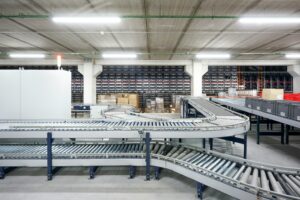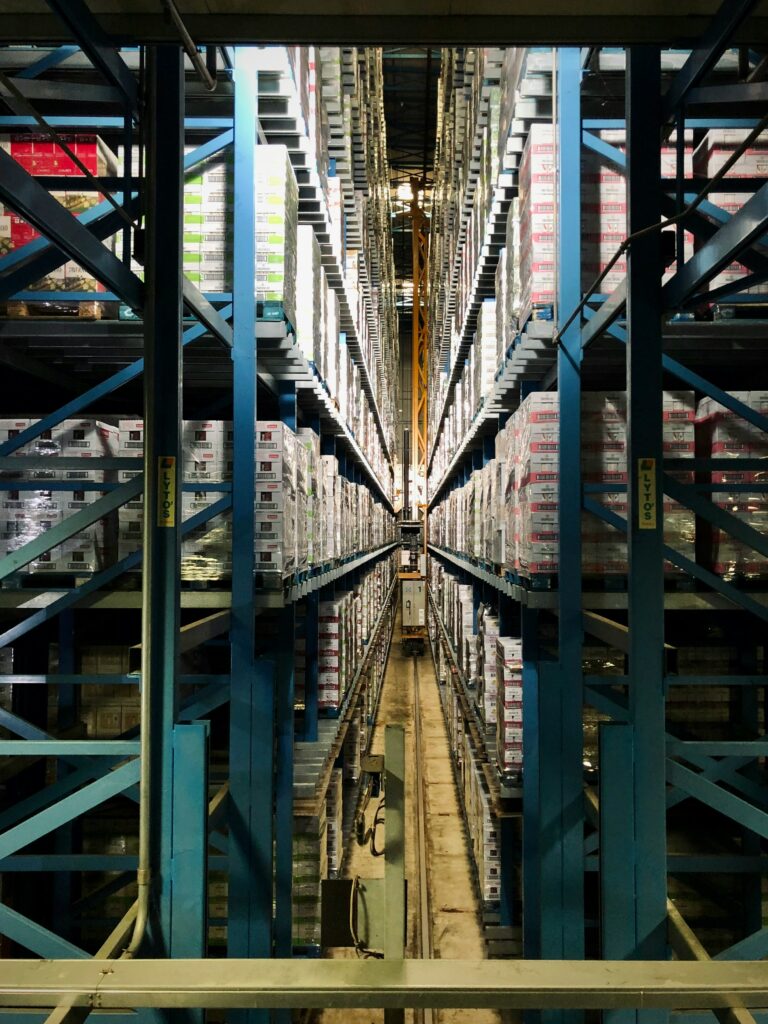Implementing a robotic palletizing solution using a collaborative robot (cobot) cannot only help your production operations run as smoothly as possible but also contribute to increasing speed, output, and reducing costs.
In fact, with the labor shortage, automation through robotic palletizing will have a significant impact on the future of manufacturing. It is already helping businesses around the world rethink their processes, maximize production, and grow in the face of a global workforce shortage. However, knowing how beneficial automation with robotic palletizers can be is different from knowing how to implement a robotic palletizing solution effectively. Therefore, here are five key principles of robotic palletizing to improve your production capabilities.
1. Consider the size and reach of the Robot
First and foremost, to automate palletizing properly, it’s essential to determine in advance whether the size and reach of the palletizing type fall within the normal operating range of the robotic arm. Additionally, the correct placement and cycle time are critical factors to consider when choosing a robotic palletizing strategy.
As with all advanced technologies, it’s crucial to ensure the correct positioning, reach, and size of the program robots. Otherwise, some materials, boxes, or products might exceed the reach of the robotic arm. Similarly, if the selected position is near the arm’s reach limit — such as for palletizing boxes — it can significantly impact efficiency.
2. Choose the right end-effector/gripper
Unlike manual palletizing, the quality and operational efficiency of your cobot solution depend on the end-effectors or grippers. Just like having a good workstation and sufficient floor space, it’s essential to ensure you have the right tool for a successful project. There are several things to consider here:
First, the type of box your products are packed in. Some types of grippers will be more suitable than others. Secondly, you need to take into account the pace of work of your palletizing cobot and its working environment. If you plan to push your robotic palletizing system to its payload limits consistently for long periods each day, opting for lighter grippers can help reduce wear. Some grippers will also require an external power source.
3. Familiarize yourself with stacking patterns
No two automatic palletizing operations are alike. So, you need to make sure that the stacking patterns you use are the right ones. You’ll need to stack your pallets, products and boxes to the maximum acceptable height for transport trucks and containers. Your stacking patterns are important because they determine how much product fits on each pallet, and how stable each finished pallet is.
Designing your own stacking patterns can be complex. This involves translating the pallet stacking model into coordinates that can be used by the robot. Fortunately, there are many software packages and application kits available that enable users to design and modify their own stacking models without having to write a single line of code. These software solutions are invaluable when it comes to democratizing the benefits of automation, as they enable users with minimal automation experience and training to get started.

4. Plan ahead for a reasonable palletizing path
Another key step for successful robotic palletizing is to pay attention to the order and definition of transition points during the palletizing process. Precise definition of transition points can improve the efficiency of your palletizing solution.
Every time an operator places pallets or boxes in a palletizing cell, it must pass through a transition point. The transition point ensures that the path of the material and products is consistent every time. Failing to follow these rules can lead to unstable palletizing operations, poor worker safety, and inefficient production lines.
5. Consider payload
It might sound simple, but you need to make sure that the robot model you’ve chosen can perform the palletizing tasks you require. When it comes to payload, this means you need to carefully consider the weight of the packages and products/boxes being moved, as well as conveyor throughput. You may need your cobot to handle multiple boxes at once, which in turn may require a higher payload capacity.
And don’t forget to factor in the weight of the grippers you will be using as well. This will help you achieve the best possible performance.
It’s also important to understand the limitations of robot palletizer-based solutions. If you need your robot to handle payloads of more than 16 kg at a time, you will likely need to start considering traditional industrial robots. These will require more extensive user training via learning robots and additional safety infrastructure but will be able to meet your needs. That being said, for most palletizing solutions, the reach and payload capabilities of a palletizing cobot should be more than sufficient.



























